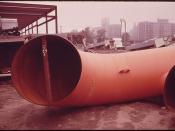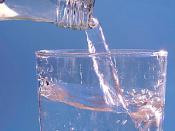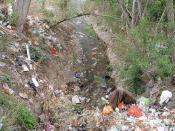a)FactorImpact on Water QualityTest used to assess each factorTemperature Determines how much oxygen can be dissolved in water and this allows for organisms to be able to live in water by the process of respiration.
Sustained high temperatures can kill bacteria that can be present in water. It can be used to kill an outbreak of E. coli to help prevent sickness from tap water.To check that there are no hot or cold discharges into waterways that could possibly threaten life forms that dwell In these water bodies thermometers are used regularly.
Hardness The presence of high levels of calcium and magnesium ions makes water hard. This means that soap does not lather (form bubbles).
Sydney water is classified as soft (hardness in various dams varies from 10-40 ppm). Adelaide is moderately hard (up to 140 ppm).
Soft water < 75 ppmHard water 150 - 500 ppmTotal hardness is the measure of the total concentration of calcium and magnesium ions in water expressed as the equivalent amount of dissolved CaCO3 (1 mg CaCO3 L-1 = 1 ppm).
A titration with a complexing agent (EDTA) and indicator is used to determine the hardness of a water sample. Stoichiometry: Ca2+/EDTA = 1:1Reaction = caTurbidity Is a measure of the amount of colloidal suspended in the water. This makes the water cloudy and can prevent light reaching organisms living in the water. Larger suspended particles make the water temporarily turbid but they eventually settle out in calm water. The unit of turbidity is a relative unit called NTU.
Potable water: < 3 NTU.
Water able to support aerobic organisms: < 25 NTU.A turbidity meter is connected to a data logger is used to measure the degree of scattering of light by the water sample. By using a range of diluted turbidity standards...


